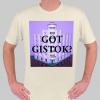Search the Community
Showing results for tags 'No set number on boxes...'.
Found 1 result
-

LEGO Wooden Box Sets... least known of all LEGO sets...
LEGO Historian posted a topic in General LEGO Discussion
Probably the most complex and least understood of all LEGO sets were the wooden box sets of 1949-1980. TLG had this bad habit with those old sets.... they NEVER put a set number on the box... just in a few rare instances an occasional small sticker. In the late 1949 to 1980s era wooden box LEGO sets were mainly of 3 types.... 1) an institutional set (for schools or other businesses), 2) a luxury gift set, since these were relatively pricey, or 3) as retailer boxes for loose parts or service packs that the retailer kept under the counter, or under the LEGO rack/shelf. Duiring the 30 years that TLG produced wooden box sets... they produced over 80 different ones, mostly sold in continental Europe. What makes these sets so obscure and relatively unknown was that each country pretty much had their own set numbers for use on the boxes... even though some boxes were similar or identical in multiple countries. And the worst part about buying old wooden LEGO boxes at an online auction is that most sellers don't have a clue what set they have. The wooden box set identifiers were "Content Lists"... a single sheet of paper that listed an inventory of the parts found inside. These Content Lists had the set number on the top of the page, and they were often the first thing that got lost in the set over the years. No Content List often meant no set identification. A very frustrating situation. I spent 6 years coming up with a compilation of the 80 or so wooden box sets (no online database has more than 5 or 10, since they're so hard to identify). The images included here pretty much cover about 90% of them, since sometimes the same box would be found with up to 10 different set numbers, depending on which country they were sold in. As I said... very confusing and frustrating. Here are 2 images that show most of the box designs.... What gets mind boggling about many of these sets is that some are sold "with contents" and empty (same box), some are sold with up to 24 partitions (the most common number) or as few as 1 partition, with 2, 8, 1, 16 partition numbers in between). And often if you find an empty box... you're not always sure that it was originally sold that way or not! Some of the wooden box sets come in up to 5 different box design types (the British 700K set holds that record). And then there's packing variations. Many wooden box sets were sold for a number of years, and they may have undergone a content change, since some parts were either discontinued, or new parts were introduced. The before and after variations of when LEGO wheels were introduced in 1962 being just one of the more common wooden box packing variations. And then there's the box itself... many have Masonite tops and bottoms, others are totally of natural wood (of different types). And sometimes the same box design will have either a hinged top, or a sliding top... sometimes with 1 clasp or 2 clasps. And then there are the institutional LEGO wooden boxes with red Masonite lids... known as "Terapi I", "Terapi II", and "Terapi III" in the early 1960s in Denmark, Norway and Finland, as "T/2", "7" or "90" when empty in the 60s/70s... and as "91", "92" and "93" in continental Europe in the 1970s. LEGO Mayhem at its' most confusing!! Chapter 14 - Wooden Boxes, of my LEGO DVD/download has 37 pages of 6 years research of auction data, collecting info, and LEGO Archive data on these very confusing sets. Oh and one last thing... the LEGO Vault in Billund Denmark... they only have a few of the over 80 wooden boxes I have pictured in my Collectors Guide...
